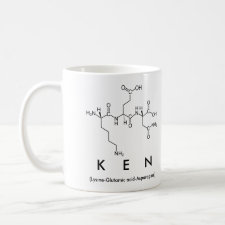
Authors: Umpleby RJ, Baxter SC, Chen YZ, Shah RN, Shimizu KD
Article Title: Characterization of molecularly imprinted polymers with the Langmuir-Freundlich isotherm.
Publication date: 2001
Journal: Analytical Chemistry
Volume: 73
Issue: (19)
Page numbers: 4584-4591.
DOI: 10.1021/ac0105686
Abstract: The majority of binding models that have been applied to molecularly imprinted polymers (MIPs) have been homogeneous models. MIPs' on the other hand, are heterogeneous materials containing binding sites with a wide array of binding affinities and selectivities. Demonstrated is that the binding behavior of MIPs can be accurately modeled by the heterogeneous Langmuir-Freundlich (LF) isotherm. The applicability of the LF isotherm to MIPs was demonstrated using five representative MIPs from the literature, including both homogeneous and heterogeneous MIPS. Previously, such comparisons required the use of several different binding models and analyses, including the Langmuir model, the Freundlich model, and numerical approximation techniques. In contrast, the IF model enabled direct comparisons of the binding characteristics of MIPs that have very different underlying distributions and were measured under different conditions. The binding parameters can be calculated directly using the LF fitting coefficients that yield a measure of the total number of binding sites, mean binding affinity, and heterogeneity. Alternatively, solution of the Langmuir adsorption integral for the LF model enabled direct calculation of the corresponding affinity spectrum from the IN fitting coefficients from a simple algebraic expression, yielding a measure of the number of binding sites with respect to association constant. Finally, the ability of the LF isotherm to model MIPs suggests that a unimodal heterogeneous distribution is an accurate approximation of the distribution found in homogeneous and heterogeneous MIPs



Join the Society for Molecular Imprinting

New items RSS feed
Sign-up for e-mail updates:
Choose between receiving an occasional newsletter or more frequent e-mail alerts.
Click here to go to the sign-up page.
Is your name elemental or peptidic? Enter your name and find out by clicking either of the buttons below!
Other products you may like:
 MIPdatabase
MIPdatabase









